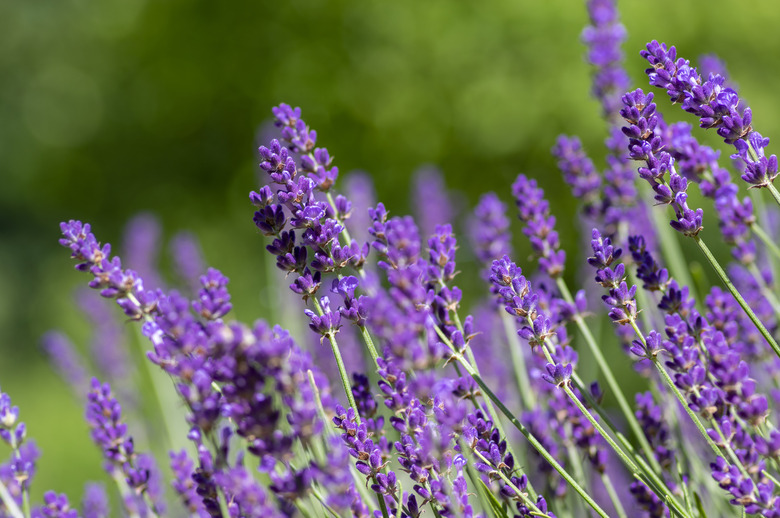How To Tell If Lavender Plants Are Dead
We may receive a commission on purchases made from links.
One of the best things about the transition from winter to spring has to be seeing plants and flowers come out of hiding from the previous year. Although you may expect to see your lavender plants (Lavandula spp.) making a comeback as soon as the spring season begins, don't worry if they look dead before they coming back in full force. There are ways to tell if lavender plants are truly dead, so before you start worrying about your lavender — or even pulling it up — test your plant.
Lavender Plant Characteristics
Lavender Plant Characteristics
One of the most widely grown lavender species, Lavandula angustifolia, also known as English lavender, is an aromatic subshrub that comes from the Mediterranean. The semi-woody plant is a perennial in U.S. Department of Agriculture plant hardiness zones 5 through 8, grows to 1 1/2 to 3 feet tall and has narrow, green leaves on square stems. During the late spring to early summer, aromatic blue-violet, mauve, pink or white flowers can grow in terminal spikes. In warm winter climates, the leaves are evergreen. Lavender loves full sun, but it also likes afternoon shade in hot climates. Although lavender is very drought resistant, the woody subshrub will flower better if the doesn't dry out completely.
Brown Lavender Plants
Brown Lavender Plants
If your lavender plant looks brown entering the spring months, you may automatically think it didn't survive the winter months, but that isn't always the case. Before you're tempted to pull up your entire plant, try to remember whether you pruned the stems of your lavender before mid-fall. If you didn't prune your lavender plant's stems, last year's lavender stems could be obscuring or delaying budding. Another thing to consider is that, even if your lavender plant's tips are brown, your lavender plant's base may not be.
Lavender Plant Life Check
Lavender Plant Life Check
Look at the base of your lavender plant to see if the base is green. If you don't see green at the base, and you pruned the plant before mid-fall, grab a pair of sharp bypass pruning shears and cut a small stalk close to the plant's base. When you're cutting the stalk, take note if the stalk snaps easily or not. If the stalk does snap easily, then, unfortunately, your lavender might be dead.
Before you pull up the whole plant, though, cut a couple more stalks around the base of the plant. You should test different spots around the base of your lavender plant, because you could be experiencing deadwood (when one area of a plant dies). If multiple stalks are snapping easily, then the entire lavender plant is dead.
On the other hand, if you cut your plant's stalk and the stalk has some give, or it's a bit soft when you cut it, then you don't need to keep cutting to see if your plant is dead. All you have to do is use your fingers to bend the stalks slightly. If multiple stalks bend easily, then your lavender just needs a little longer to come to life. It's not uncommon for lavender sections to look dead and then come to life, so just be patient.
Dealing With Deadwood
Dealing With Deadwood
If you're experiencing deadwood and the rest of your lavender plant is alive, you need to remove the dead section. All you have to do is cut the deadwood with a clean pair of sharp bypass pruning shears. When cutting out the deadwood, make sure you don't cut or damage your lavender's live sections.
